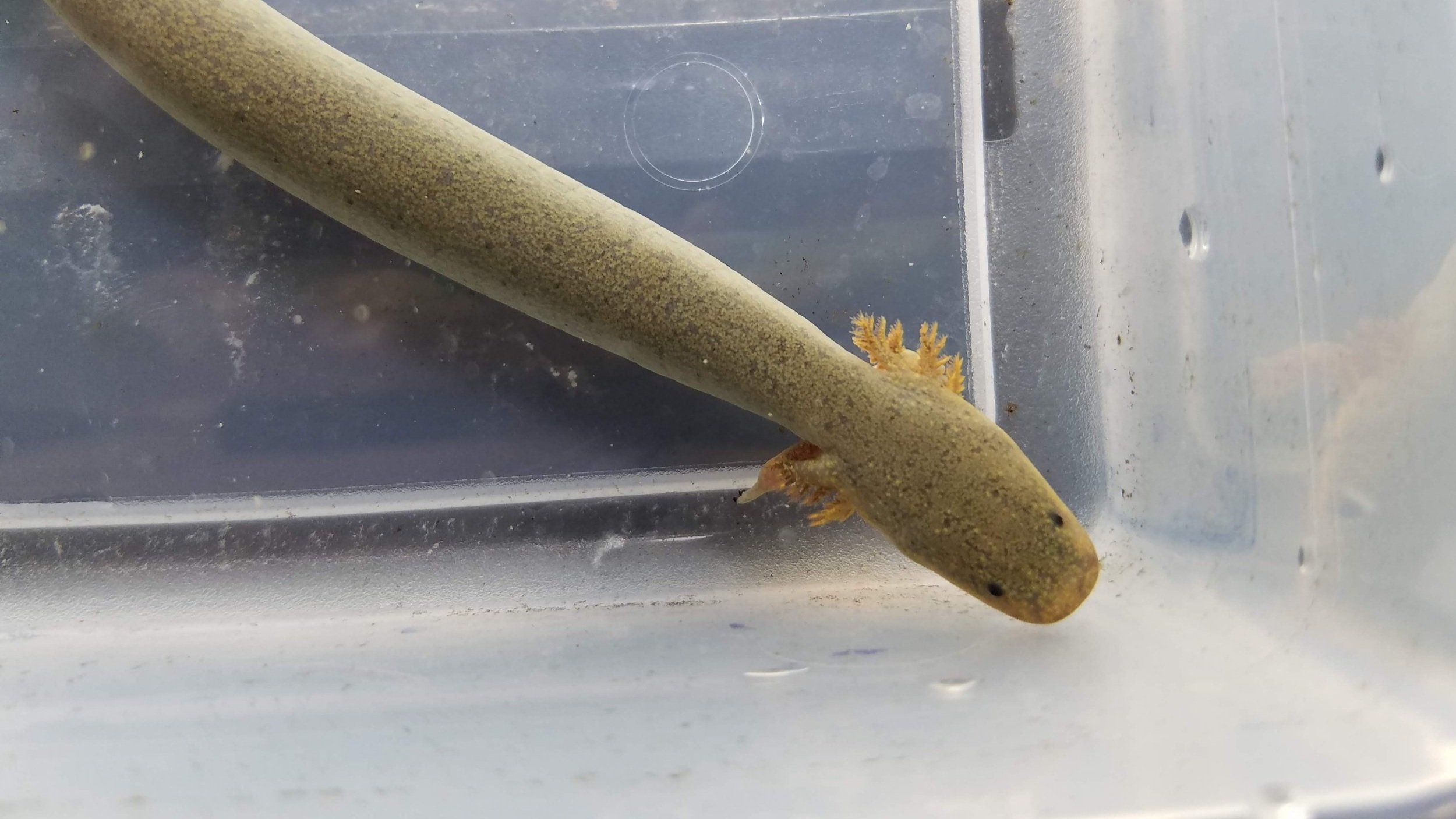
Lesser Sirens
[Siren intermedia]
Quick Reference Care Guide
Housing:
Up to 75+ gallons depending on number and size
Water MUST be dechlorinated and should be properly cycled
Water should be kept between 60F and 75F ideally. Room temperature is typically fine as long as your house stays under 80F
Sand substrate (best option) or bare bottom tank. ABSOLUTELY NO GRAVEL
Tankmates should only include other, similarly sized lesser sirens and tiny fish and invertebrates intended to be eaten. DO NOT MIX SPECIES, NOT EVEN OTHER SIREN SPECIES. DO NOT MIX WITH TROPICAL FISH BESIDES TINY FEEDERS
Your tank should have a secure lid. Sirens are escape artists, and are extremely strong. Escape attempts are especially frequent when they are introduced into a new tank.
Sponge filters are the best option, but mechanical filters are ok as long as there is 100% absolutely no way for the siren to get into the intake.
Plants such as Anacharis, Vallisneria, Java Moss, and Water Lotus are excellent choices, as sirens really enjoy both hiding and having things to tangle up in.
Hides can be easily made from PVC or ABS pipes from your local hardware store. Pavers and landscaping stones can be stacked into caves.
normal aquarium lights are fine so long as the sirens have adequate hides and cover.
Food and Diet:
Particularly young animals will prefer live and frozen food, like blackworms, bloodworms, and brine shrimp
Most Lesser Sirens will eat all kinds of food. Earthworms are a particularly nutritious favorite. They also love to eat snails. Frozen fish food is gladly accepted as well as sinking carnivore pellets. They will opportunistically predate on small feeders like endlers guppies and ghost shrimp, but largely prefer to scavenge off the bottom for some easy scraps.
Lifespan:
There’s not a lot of data on this, but 5-10 years, perhaps more.
Depending on the locality and subspecies of Lesser Siren, size can range from a little over 1 foot and the thickness of a hotdog, to nearly 2 feet and the thickness of a banana.
Project Status:
Captive breeding successfully accomplished as of March 2022
Animal Availability:
Not Currently Available: All of our CB ‘22 juveniles have been rehomed. Fingers crossed that the adults lay again this year!
After out first breeding of Siren intermedia, our adults are still in excellent health, and we look forward to another clutch next year!
Breeding and Reproduction Information
Below, I’m going to go into the methods I used specifically for breeding Siren intermedia, however, if you are serious about breeding them, I highly suggest you first check out the Breeding and Reproduction section for Siren lacertina. That page has more detailed information and context that will give you a much better foundational understanding on my breeding process. Its particularly helpful in this case, because the breeding strategy and mating mechanics of Siren lacertina and Siren intermedia are nearly identical. In fact, most of the information that I used to breed S. lacertina came from a paper written about S. intermedia.
I currently keep 4 Siren intermedia that are 12-14 inches in a 40 gallon “breeder” tank. This is definitely on the smaller end of the spectrum for the space they really need, and I would absolutely recommend 55 or 75 gallons. I believe my group is most likely 2 females and 2 males. If you need help determining the sex of your sirens, go check our ID guides for an easy way to check! They have about 4 inches of sand substrate, an airstone, and a cannister filter. Additionally, I have 2 caves, each built out of 3 stone pavers from Home Depot, stacked in a Π shape. Each of these caves is stuffed full of java moss for cover as well as being a nesting medium. There is also many long strands of anacharis growing from substrate to surface and a large sword plant in the center.
I was not planning or expecting them to lay eggs currently, so I only noticed when horseshoe-shaped bite marks started showing up on everyone and one of the sirens was just sitting in the front cave, swishing his tail back and forth for several days on end. Finally, a number of eggs became visible from the ball of entangled java moss. There was about 50 in all, and I believe they all hatched after 2-3 weeks save one or two. Similarly to how I handled S. lacertina’s clutch, I removed the eggs from the parents’ tank with the moss that they were attached to, and placed them in a hatching/ nursery tank with an airstone beneath the eggs. I’ll post another page with more information regarding nursery tanks and link it here sometime in the near future. So far they have had a very high survival rate, and I have only lost maybe 3 or 4 throughout the entire process.

